The Orbit of Mars
This animation shows how Earth and Mars move around the Sun in their orbits.
 Click the "Play Fast" button in the lower left corner to make the planets move. For every second that passes, the planets will move as far as they go in one week.
Click the "Play Fast" button in the lower left corner to make the planets move. For every second that passes, the planets will move as far as they go in one week.
(Note: If you cannot see the animation below, or it is not working properly, you may need to download the latest Flash player.)
The other buttons make the planets move faster or slower, move backwards, or stop. The "pretend" date is shown above the buttons.
The circle in the upper left corner shows how big Mars looks through a telescope from Earth. The text under the telescope view shows how far apart Earth and Mars are.
The red dot is Mars. Earth is blue, and the Sun is yellow. This animation shows where the planets really are. However, the sizes of the planets are much too big in this view than they really should be. If we showed the planets at their "real" sizes, they would be very tiny dots.
You might also be interested in:
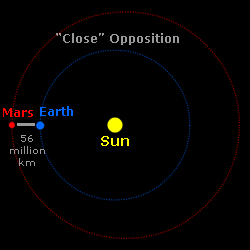
On August 27, 2003, Earth and Mars will be very close together. Well, close for planets anyways. The two planets will still be almost 56 million kilometers (about 35 million miles) apart. They will be
...more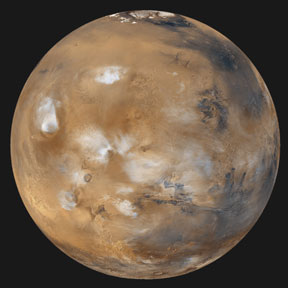
Sometimes Earth gets pretty close to the planet Mars. Mars and Earth will be close to each other on October 30, 2005. Mars will look like a bright red star. Mars will be about 69 million km (43 million
...more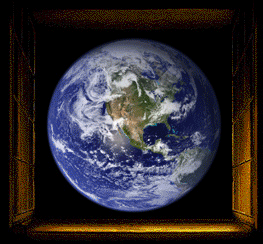
Here you will find links to all sorts of pictures, animations, videos, sounds, and interactive multimedia that are on Windows to the Universe Explore collections of images in the Image Galleries. Watch
...more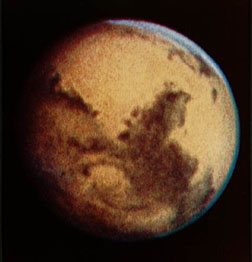
Mars is a bright, red object in the sky. It is very easy to see, which means that even people that lived long ago knew it was there. So, we don't know who discovered it. We do know it was named after
...more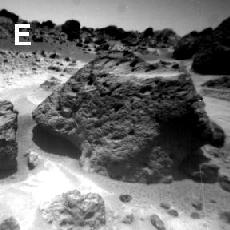
On Mars the surface winds accelerate to higher speeds than those on Earth. These winds can be whipped to an extreme during the frequent Martian global dust storms. The first weather measurements made from
...more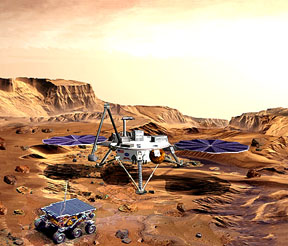
The Mars 2003 mission includes a lander and a rover. The mission will start sometime in May or June, 2003. The lander will carry the rover, and it will use rockets to help it land on the surface. The
...more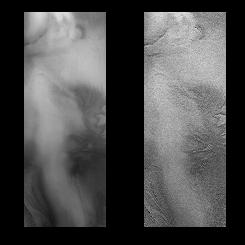
The Mars '98 lander was suppose to land near the south pole of Mars. This picture of the south pole was taken by the Mars Global Surveyor mission. Unfortunately, contact with the Mars '98 lander was lost,
...more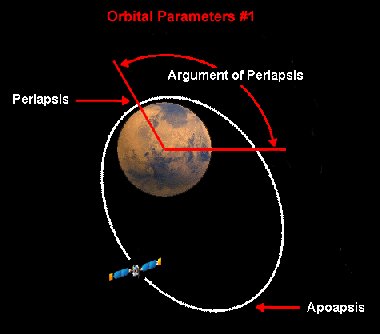
When the Mars Global Surveyor first went into orbit around around Mars, its orbit was elliptical. That means the orbit (shown by the white line in the picture) was shaped like an oval or an egg. But then
...more
![]() Click the "Play Fast" button in the lower left corner to make the planets move. For every second that passes, the planets will move as far as they go in one week.
Click the "Play Fast" button in the lower left corner to make the planets move. For every second that passes, the planets will move as far as they go in one week.













